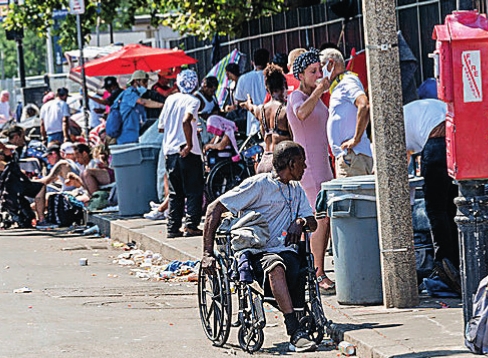
City officials are taking a victory lap on Long Island Bridge reconstruction despite being unable to answer questions about the final cost of rebuilding the island’s facilities or where that estimated $500 million or more will come from.
While it’s now all but certain the bridge to Long Island will get the permits it needs for reconstruction to begin, the mayor’s office is refusing to say how much it will cost to get the island’s dozen buildings itself functional again or how it will find space in the city budget.
That’s especially troubling
given the bridge and facilities will supposedly be completed
simultaneously. Planning and funding for the facilities apparently lags
significantly behind that of the bridge.
The
bridge received its Chapter 91 approval from the state on August 10,
leaving only two further review processes before the city can begin
construction. The first is from the state’s office of coastal zone
management, and the second from the coast guard. Neither is expected to
be a major obstacle.
That
said, they can’t actually begin until the 21-day appeal window on the
Chapter 91 approval closes, and Mayor Michelle Wu has said she expects
yet another appeal from the city of Quincy, which would likely take 6-12
months.
Quincy
Mayor Thomas Koch is yet to commit one way or another, with his office
saying that it had “no comment at this time” on the matter.
It’s
a solid step toward the large-scale drug rehab programs the city
desperately needs, with demand for existing ones far outstripping supply
as officials struggle to curtail the open-air drug market near Mass and
Cass.
There is,
however, still that significant question unanswered about the plan. How
much will it cost to repair the island’s derelict facilities, and where
will Mayor Wu find that funding?
Officials
readily give estimates on the bridge’s reconstruction, with $80 million
of the projected $100 million cost already included in the fiscal year
2024 budget. A further $38 million has been set aside to stop the
island’s facilities from deteriorating further. When it comes to
actually bringing them back to working order, however, officials remain
pointedly silent.
“The
ultimate cost of bringing the campus online will depend on the services
and the phasing. We’re really focused on what the first phase will look
like, and as we design that we’ll have a clearer cost estimate of what
it will take to fully retrofit the buildings,” said Chris Osgood, Mayor
Wu’s senior advisor on infrastructure, at the initial press briefing.
Officials
later declined to give even a range of likely costs. They also declined
to give a more detailed timeline, an estimate of when they’d have a
cost estimate, or say how they expect to fund the repair of facilities
beyond an initial gesture by Mayor Wu that “private philanthropy may
play a role.”
Estimates
from the Walsh administration put the cost at $540 million to
reinvigorate the island’s over 350,000 square feet of space, and it’s
almost certainly more expensive today due to international supply chain
disruptions, inflation and wage increases.
One
source with experience in public development projects, who asked not to
be identified, suggested the final costs might easily exceed $1 billion
and that any projections on a completion date would be highly suspect.
Osgood
did note at an August 22 public meeting that they would not be trying
to bring the entire campus online in the four years it would take to
complete the bridge. A partial phase 1 to open alongside would be only a
fraction of the total cost, which he suggested might make the price tag
suitable for philanthropy and the city’s capital budget.
The city of Quincy was more than willing to speak on the matter, though they kept their comment brief.
“Whatever they say the price is, it’s going to be a lot more,” said Christopher Walker, Quincy’s chief of staff.